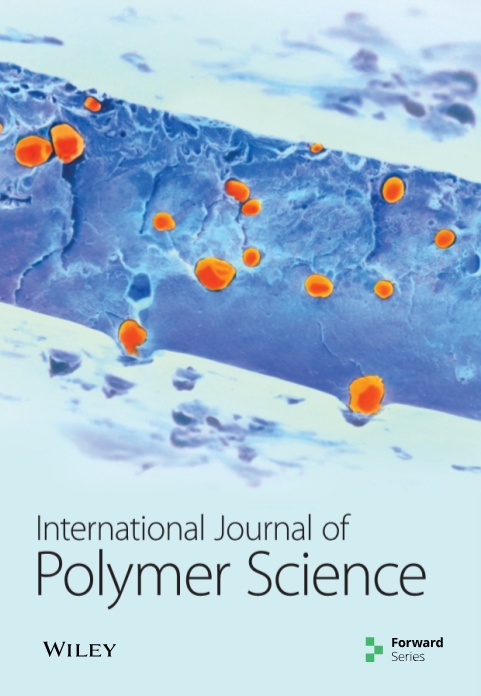应用纳米沉淀法制备Poloxamer-407促进固体脂质纳米颗粒以控制他克莫司的递送
IF 4.4
4区 化学
Q2 POLYMER SCIENCE
引用次数: 1
摘要
目前,固体脂质纳米颗粒(SLNs)被用作控制药物递送系统(CDDS)的一种新方法。他克莫司是一种亲脂性药物,使用纳米沉淀技术可以很容易地将其包裹在这些SLN的疏水核心中。目前的目的是开发控制释放的泊洛沙姆(PLX)促进的中药负载的SLNs(PLX/TCM SLNs),然后对其进行物理化学评价,包括化学相容性、粒径、表面电荷、表面形态、SLNs的性质、负载效率(LE)、包封效率(EE)、体外药物释放研究、释放动力学建模,以及统计评估。在这里,我们还评估了中药的理化性质,并研究了PLX/TCM SLNs的溶解度曲线,以改善其溶解速率。PLX由于其低毒性和弱免疫原性而在该过程中作为聚合物使用。通过扫描电子显微镜(SEM)图像对制备的制剂进行了表征,傅立叶变换红外光谱(FTIR)证实了所选成分的相容性,而粒度分析表明,制备的PLX/TCM SLN具有纳米尺寸(120.6±9 nm),ζ电位为−21.3 另一方面,SEM显示了颗粒的光滑均匀的表面,而X射线衍射(XRD)证实了在PLX/TCM SLN中TCM的晶体结构是均匀的。EE也达到了令人满意的水平(94.5±2.74%)。此外,体外药物释放研究探索了药物在8小时内的控制释放,遵循零级释放动力学和扩散型释放机制。研究结果表明,由于控释PLX/TCM SLNs已被有效制备,因此SLNs的制备是成功的。本文章由计算机程序翻译,如有差异,请以英文原文为准。
Application of Nanoprecipitation Technique to Develop Poloxamer-407 Facilitated Solid Lipid Nanoparticles for the Controlled Delivery of Tacrolimus
Currently, the solid lipid nanoparticles (SLNs) are utilized as a novel approach for the controlled drug delivery system (CDDS). Tacrolimus (TCM), a lipophilic drug, can easily be encapsulated in the hydrophobic core of these SLNs using nanoprecipitation technique. The current aim was to develop the controlled release Poloxamer (PLX) facilitated TCM loaded SLNs (PLX/TCM-SLNs), followed by their physicochemical evaluations, including chemical compatibility, particle size, surface charge, surface morphology, nature of SLNs, loading efficiency (LE), entrapment efficiency (EE), in vitro drug release studies, release kinetic modeling, and statistical evaluation. Here we also evaluate physicochemical properties of TCM and investigate solubility profile for improvement and dissolution rate of PLX/TCM-SLNs. PLX was used in the process as a polymer due to its low toxicity and weak immunogenic properties. The prepared formulation was characterized by scanning electron microscopy (SEM) images, and Fourier transform infrared spectroscopy (FTIR) has confirmed the compatibility of the selected ingredients, whereas particle size analysis showed that prepared PLX/TCM-SLNs were of nanosized (
120.6
±
9
nm) having zeta potential of −21.3 Mv. On the other hand, SEM had revealed the smooth and uniform surface of the particle, while X-ray diffraction (XRD) confirmed the uniform surface as crystalline structure of TCM in PLX/TCM-SLNs masked. A satisfactory level of EE (
94.5
±
2.74
%) has also been noticed. Furthermore, in vitro drug release studies have explored the controlled release of drug during 8 hours, following zero order release kinetics and diffusion type of release mechanism. Outcomes of the studies have advocated the successful preparation of SLNs, as controlled release PLX/TCM-SLNs have been prepared efficiently.
求助全文
通过发布文献求助,成功后即可免费获取论文全文。
去求助
来源期刊

International Journal of Polymer Science
POLYMER SCIENCE-
CiteScore
6.10
自引率
0.00%
发文量
55
审稿时长
>12 weeks
期刊介绍:
The International Journal of Polymer Science is a peer-reviewed, Open Access journal that publishes original research articles as well as review articles on the chemistry and physics of macromolecules.
 求助内容:
求助内容: 应助结果提醒方式:
应助结果提醒方式:


